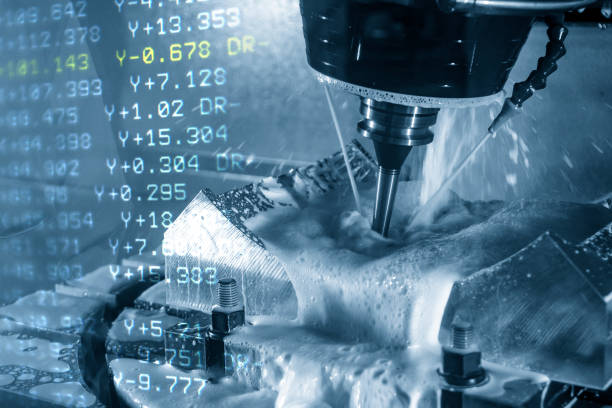
Computer numerical control (CNC machine) is a tool that converts numerical code into Cartesian coordinates for making an item from raw material. CNC milling is a special type of CNC machining which uses computerized controls and a machine to cut material from solid blocks to make a part. Since it is made to drill and cut materials, a milling machine works in the same way as other drill machines.
However, milling machines differ from traditional drilling machines because they're capable of cutting at different angles and travel along various axes. In terms of technology, there aren't limits to how many milling axes an instrument can be equipped with. However, most commonly they're known as 4-axis or 3-axis machines. CNC milling can be used with many materials, including metal, wood, and even plastic.
Milling, just like other mill bit types processes relies on computerized control systems which control the machines that cut or shape stock material. CNC milling, however, is a mechanical process. This means that the material is removed using mechanical means rather than chemical, electric, or thermal methods.
Understanding the processes of CNC milling
Milling involves the same steps that are used in other CNC manufacturing processes. They include the following.
The design of the components is done using computer-aided design (CAD) The first step involves creating the virtual representation of the part via CAD software, typically employing a CAD-CAM software.
Converting CAD files to numerical code A number of CADCAM applications convert CAD files into numerical code that can be understood by the milling machine. These programs also check for mistakes in the design, ensuring the milling machine will never be instructed to create a part that includes impossible-to-machine features.
The setup of the milling machine While CNC milling machines are able to cut and drill without manual intervention however, some parts of the process will need manual input. For one, it's necessary to attach the workpiece to the worktable, and then attach the milling equipment to the spindle.
Parts production: The milling machine uses the rotation of a tool to cut chips from the workpiece, and then create the part.
Conventional milling vs. climb milling
There are two typical methods of CNC milling that are used: traditional milling and climb milling. Conventional milling has been the most commonly employed. Conventional milling occurs the process of cutting in the opposite direction to the tool is moving. For a long time, this was the preferred method for machiners, as it is more tolerant on less precisely made machines. Although conventional milling can still be beneficial in certain situations however, it is crucial to remember that there's a lot of friction and rubbing involved. This wear could reduce the lifespan of the tool. It can also mean that the workpiece requires a more secure clamping and fixing.
Climb milling is a popular choice today. Modern milling techniques include high-dynamic milling leverage climb cutting that makes use of huge cuts in axial dimensions and small radius stepovers to create extremely efficient milling strategies are extremely effective. By using dynamic toolpaths, climb milling creates a smaller cutting tool with less friction and rubbing. This helps prevent the workpiece from overheating and extends the life of the workpiece. The workpiece will require less clamping because the cutting forces are usually decreased.
There are pros and cons to CNC milling
Like other carbide end mill bits CNC milling has many advantages. The precision, repeatability, and the low cost of labor are some of its major advantages.
Milling has its limitations. The most obvious is the initial cost of the machinery. Product teams have to purchase costly CNC milling machines or contract out services from a reputable manufacturer. Also, it requires specific instruction to be able to work which can be a challenge if teams choose to invest in their own machines.
Comments
Post a Comment